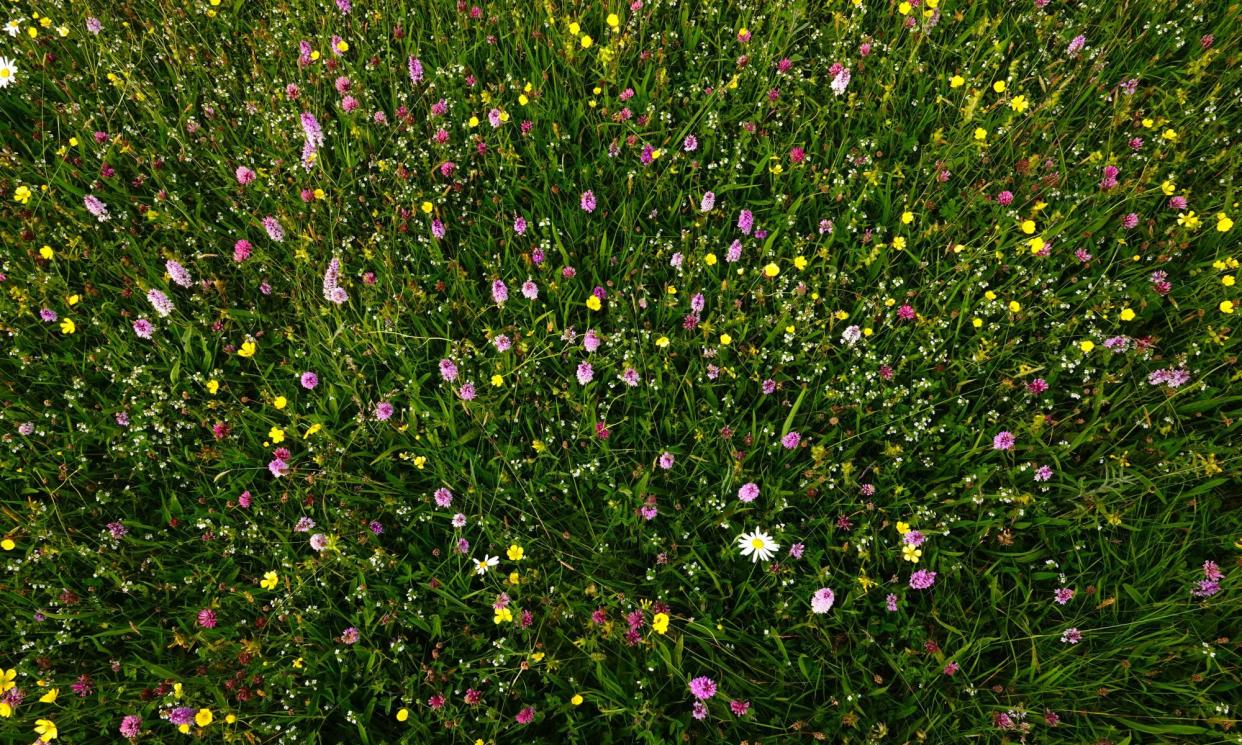Country diary: The impossible beauty of a flower meadow in summer

That the most orchid-rich meadows I’ve encountered in my life are located on an old quarry site are a reminder never to second-guess the final outcome of our industrial past. This may once have been a place of working men with pickaxes and horse carts loaded with limestone, but today it’s a folded cloth of softest green, stitched with the white of ox-eye daisies and buttercup yellow.
The orchids – common spotted with northern marsh, twayblade and bee orchids – add many thousands if not tens of thousands of touches of rose pink and dark magenta. Yet the individual colours are so threaded through the whole fabric that we noted how our sense of the orchids’ presence was often lost. At any distance, the fields where we’d found all four species just looked green.
I find this movement between the two perspectives, from the specific detail to the general overview, the most compelling aspect of flower-rich meadows. It is neither the individual beauty revealed when you bow down, nor the breath-giving panorama once you raise yourself up, that matters: it is the simultaneous apprehension of the parts and the whole. A flower meadow tells us perhaps how to approach all life.
I think orchids also offer us insights into these matters. True, they are tricksy and sexy, and some orchids put out perfume that sends their pollinators mad with desire, so that they would rather copulate with the lips of the flower than their own species. I have regularly seen insects with pollen balls glued between their antennae by orchids. They remind me of those messages sneakily stuck to people’s foreheads that say “I’m an idiot”.
Yet the orchid family, one of the largest plant groups on Earth, participates in two of the great double acts that are at the very foundations of terrestrial life. They have a deep relationship with insects, running a roughly reciprocal stock exchange of food for reproductive services. Orchids also forge profound subterranean symbiotic connections with mycorrhizal fungi. Our species, however, is calculated to spend $21bn on fungicides and a staggering $131bn on general pesticides annually.
• Country diary is on Twitter at @gdncountrydiary
• Under the Changing Skies: The Best of the Guardian’s Country Diary, 2018-2024 (Guardian Faber, £16.99) is published on 26 September; pre-order now at the guardianbookshop.com and get a 20% discount


